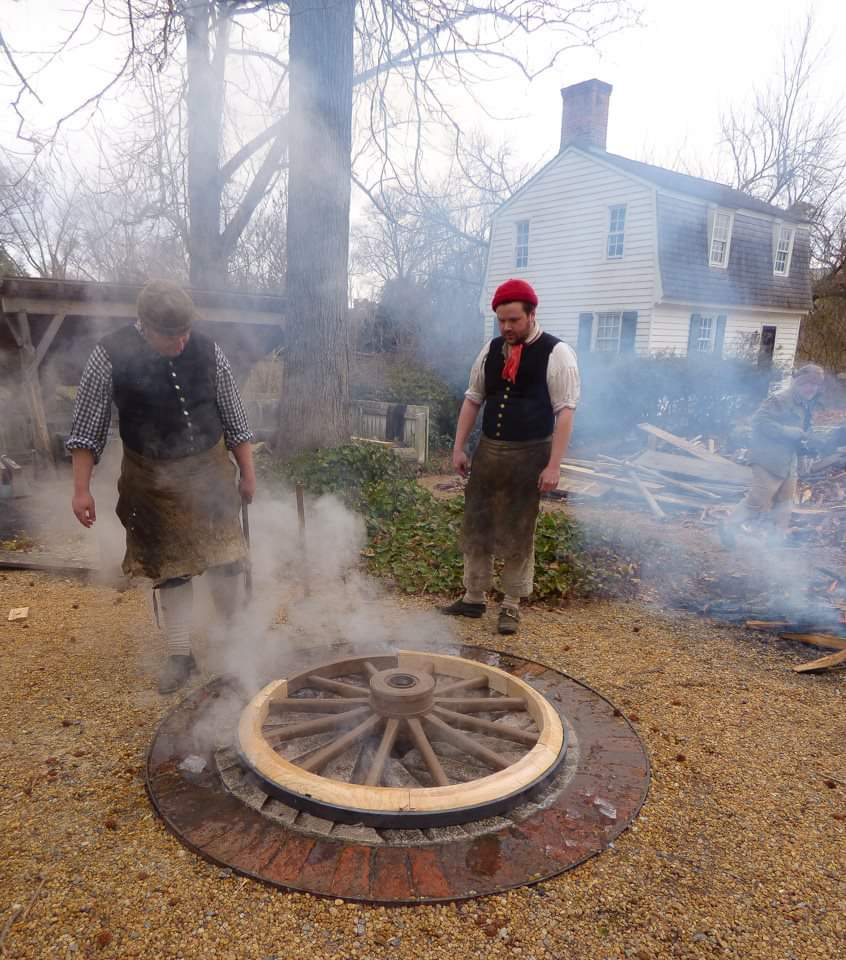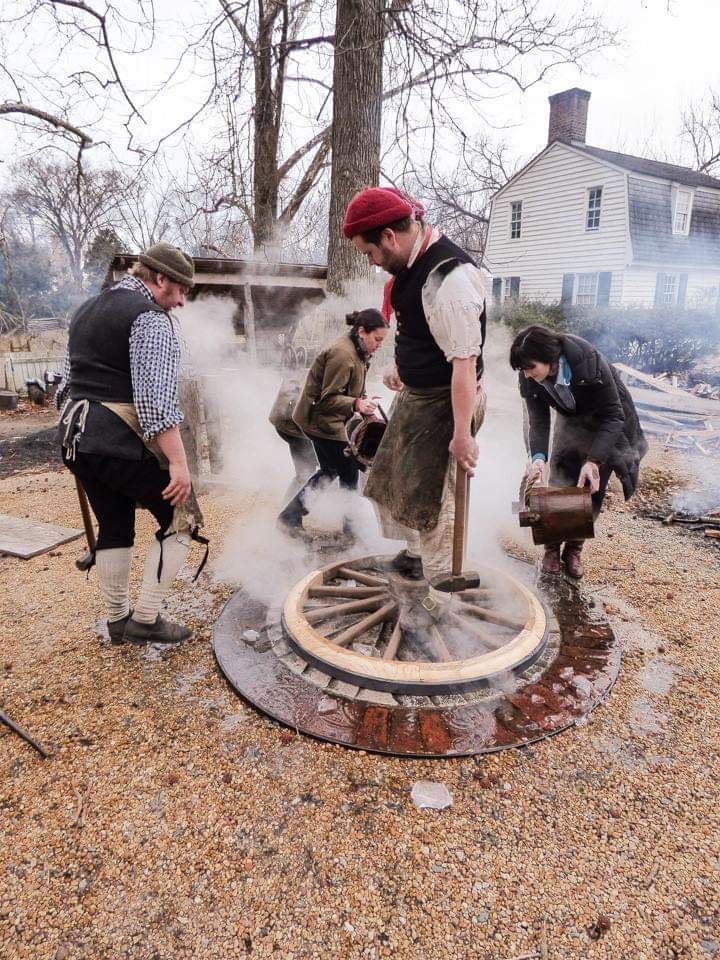With thousands of visitors over the years, there are many questions we hear at the Wheelwright Shop. Allow us to answer four of the most frequently asked questions.
1) Is this your real job?
Yes, we are one of more than 20 trades professionally practiced at Colonial Williamsburg, home to the largest trades preservation program in the world. We go through a lengthy apprenticeship and practice our trades as a career.
We have been recognized by the Worshipful Company of Wheelwrights of the City of London as the only 18th-century English wheelwrights shop left in the world!
Most wheels and vehicles produced are used with the Historic Area. We also get commissions from other museums and institutions like the Smithsonian and Mount Vernon.
We are on the site of Elkanah Deane’s coach making operation, established in 1772. Although the original building is long gone, the building is a reproduction built in the 1930s based on the excavated foundations. There were, at any given time, four to six wheelwright shops (catering to freight and farm vehicles) and four to six coach making shops (catering to the luxury market) in the capital city during the colonial time period.

2) What kind of wood do you use for wheels?
Traditional English-built wheels use oak, beech, ash, and elm. All for their various characteristics. Elm, for the hub (or nave, or stock) because of its twisted grain, it makes it difficult to split. Oak for the spokes, due to its straight grain, can be easily split (or cleft) and handle end-to-end stress. Ash or beech for the felloes (rim sections) which are chopped into shape.
3) Did slaves work in this trade?
While we have no concrete evidence naming specific enslaved wheelwrights, it stands to reason that if more than half of 18th-century Williamsburg’s population was enslaved, the odds are that there were indeed enslaved people working in the vehicle trades. Unfortunately, as of now, the names of those people are lost or have yet to be discovered.

4) Were women allowed to be wheelwrights?
There doesn’t seem to be any regulation barring women (or girls) from practicing or apprenticing as wheelwrights. Elizabeth Deane was the only woman known to have run a coach making operation in Williamsburg, as she had inherited the business upon the death of her husband, Elkanah Deane.
We hope you’ll join us in person when we reopen to discover more about our trade. In the meantime, here’s some recommended reading if you’d like to learn more about the traditional wheelwright trade:
- Bailey, Jocelyn. The Village Wheelwright and Carpenter. Aylesbury: Shire Publications, 1977.
- Sturt, George. The Wheelwright's Shop. London; New York: Cambridge UP, 1974.
Paul Zelesnikar has worked for Colonial Williamsburg for over 19 years. In that time, he has attained Journeyman Wheelwright status through a 6-year-apprenticeship.
